I hit the water around high tide. The beach entry is a shallow slope, so the higher tide made for a very long swim before dropping down. The edges of the La Jolla canyon at 50-100 feet are small shelf walls that are very eroded with lots of holes and crevices. That's where were I found this Coonstripe Shrimp and his Spiny Brittle Star roommate.

On my second dive, I finally found a fringehead. His heckling of me while I tried to get a good photo in the low visibility helped me to identify him as a Sarcastic Fringehead. "You think you're a photographer? I've seen better efforts by a blind person."
Speaking of visibility, the first dives was okay at about 15 feet. What I hadn't counted on was the huge 8.8 foot swing in the tides would drag a lot of crap and particulate over the lip of the canyon as that huge amount of water was pulled away from the beach. I bet the incoming tide was very clear (and cold) as water came in from the canyon.
I present...the Sarcastic Fringehead.

There were a few nudibranches on the dive, but nothing too exciting. I did see a pretty Navanax, but none of the photos were worth posting. Here is a token nudibranch for the nudi lovers.
A White-Spotted Dorid
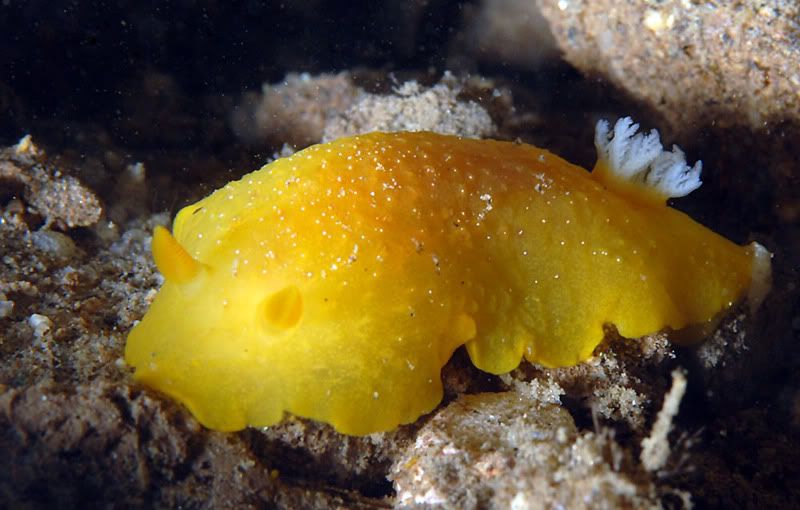
There were little Speckled Sanddabs all over the place.
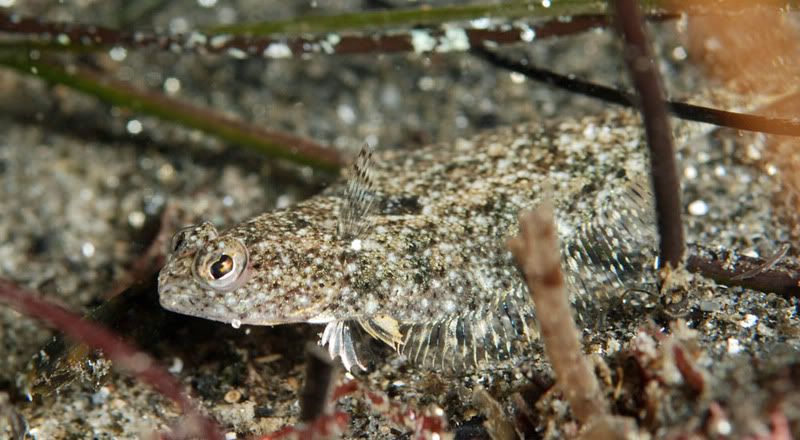
On the way in, you cross hundreds of feet of sand dollar beds. Most of the sand dollars were more like "sand fifty-cent pieces". I guess that's because of the economy and recession. Everything is worth 50% less. Many people probably don't know that they are really a pinkish color before they die and dry out, becoming the white skeleton that you find on the beach. They stand on end in the sand and use their short bristles/arms to feed as the water washes back and forth. They are mostly oriented toward the beach to best feed off of the waves that sweep in and out. Some of them even have little trails behind them where they have changed position. Once you find the sand dollars, you don't even need a compass to find the beach exit. Just head toward shallow water and go in the direction that the dollars point.
Living Sand Dollars.
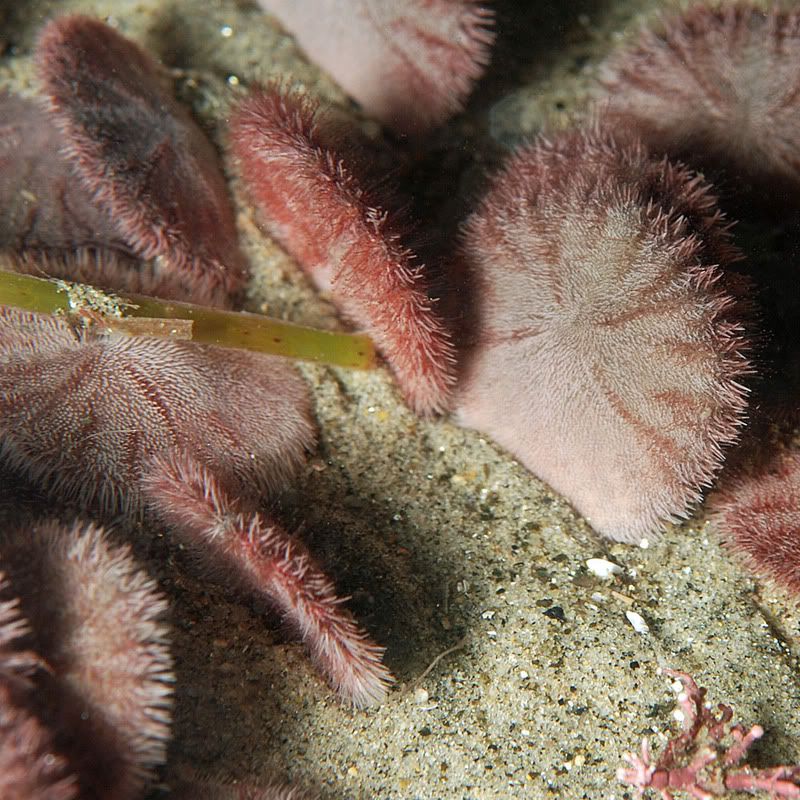
Dive 1 Summary
Time under water: 61 minutes
Maximum Depth: 101 feet
Temperature: 49 deg F
Dive 2 Summary
Time under water: 53 minutes
Maximum Depth: 64 feet
Temperature: 54 deg F
Doesn't include that %@$ quarter mile swim from the beach to where you can at least drop down twenty feet.
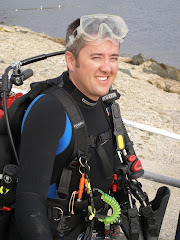
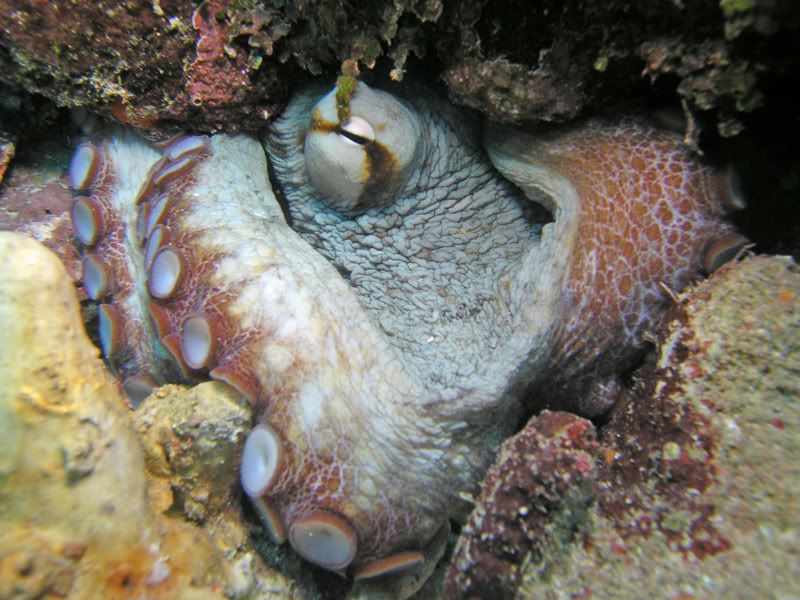



2 comments:
Really nice shots! You should come by scubapost.net and share some photos.
You may want to take a look at your blog on Firefox since it seems the layout is not so right. I have a screen capture but can't post it here.
Keep shooting and dive safely!
Sean
Thanks for the feedback. I'm in the middle of widening the page and I haven't fixed the last few elements (the rounded corners and the vertical line).
Post a Comment